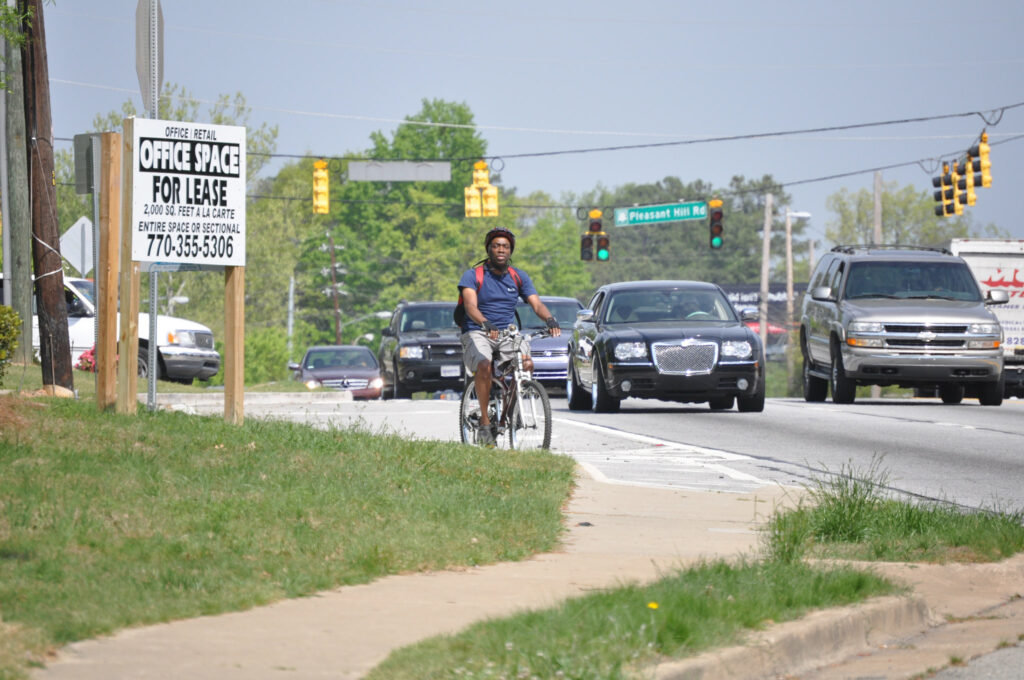Justice40 “benefits” could mean more emissions, worse health outcomes in disadvantaged communities

In President Biden’s first weeks in office, he established an environmental justice initiative called Justice40, which aims to direct benefits from federal investments to disadvantaged communities. Today, the administration is working on more specific guidance on how Justice40 should be applied, which will determine how effective this effort will be.
To see which communities are most in need of climate and clean energy investments, view the beta Climate and Economic Justice Screening Tool, developed by the Council on Environmental Quality. This tool is open for public comment. Submit feedback by May 25, 2022.
Last year, President Biden signed Executive Order 14008, aimed at tackling the climate crisis and creating jobs across the federal government. In this order, the president established Justice40, later described as “a whole-of-government effort to ensure that federal agencies work with states and local communities to make good on President Biden’s promise to deliver at least 40 percent of the overall benefits from federal investments in climate and clean energy to disadvantaged communities” (emphasis ours).
Many types of investments can be justified as climate investments, and it’s not clear what will ultimately fall under the Justice40 umbrella. The executive order listed the following as areas of emphasis: clean energy and energy efficiency, clean transit, affordable and sustainable housing, training and workforce development, the remediation and reduction of legacy pollution, and the development of critical clean water infrastructure.
The order also didn’t mention how they’d measure the types of benefits and who would benefit from investments. But currently, states and local governments are receiving a massive influx of federal infrastructure money, much of which can be used to improve resiliency and support better climate outcomes. That means states and local governments are primed to make these investments without any direction on how to ensure that 40 percent of the benefits go to the people and places most in need.
Typically, the government measures “benefits” in dollars and cents. For USDOT investments to comply with the Justice40 initiative, 40 percent of the infrastructure law’s surface transportation investments would go to underserved communities—a whopping $257 billion, or roughly $51.44 billion per year. There are at least two areas of concern here:
First, USDOT does not have the authority to meet that number because 69 percent of infrastructure funds are formula grants and have very few strings attached. The Administration does not have the authority to direct any of these funds to Justice40 communities. 40 percent of the discretionary funding, on the other hand, comes out to $31 million (far less than 40 percent of the whole program), and that could still be a generous estimate for what the Administration will be able to use to meet Justice40 objectives.
Second, even if the USDOT was on track, there’s a huge difference between simply spending 40 percent of money within underserved communities, and spending 40 percent to accomplish something productive or bring measurable benefits to those places.
While underserved communities absolutely need infrastructure investment, the kind of project matters. For example, installing Complete Streets in disadvantaged communities that lack basic safe infrastructure could improve health outcomes, reduce emissions, benefit the local economy, and provide fundamental access to people in areas that tend to have low car ownership. Adding a new highway or lane could do the exact opposite. Both investments could be counted toward the 40 percent goal in the Justice40 initiative, but one brings greater benefits than the other.
Infrastructure investments often don’t directly benefit the community where the construction takes place. In fact, in many cases when states and localities have built infrastructure in disadvantaged communities, the long-term result has been harm. Highways, for example, tend to benefit people traveling through an area while dislocating, isolating, and/or polluting the communities in which they’re built. In other words, highway construction projects are a major investment within the bounds of a community but are far from a major benefit to them.
Many funding opportunities have already rolled out, and the USDOT’s calendar of funding opportunities shows that there are still many more to come. In addition, the USDOT recently released their Equity Action Plan (EAP), and later we’ll dive deeper into what that plan could mean for infrastructure investments.
The Office of Management and Budget (OMB) is expected to release guidance on Justice40 soon. Fundamentally, they need to be honest and clear about what funding they have the power to steer—and consider that in the future when they negotiate huge amounts of funding that they cannot influence at all. And to ensure that this initiative meets its stated goal, we strongly recommend that they take into account not only the size of federal investments but the impact these investments will have on disadvantaged communities. More than just building things inside Justice40 communities, the aim of Justice40 should be delivering solutions that will improve daily life to the people who need them most.



















